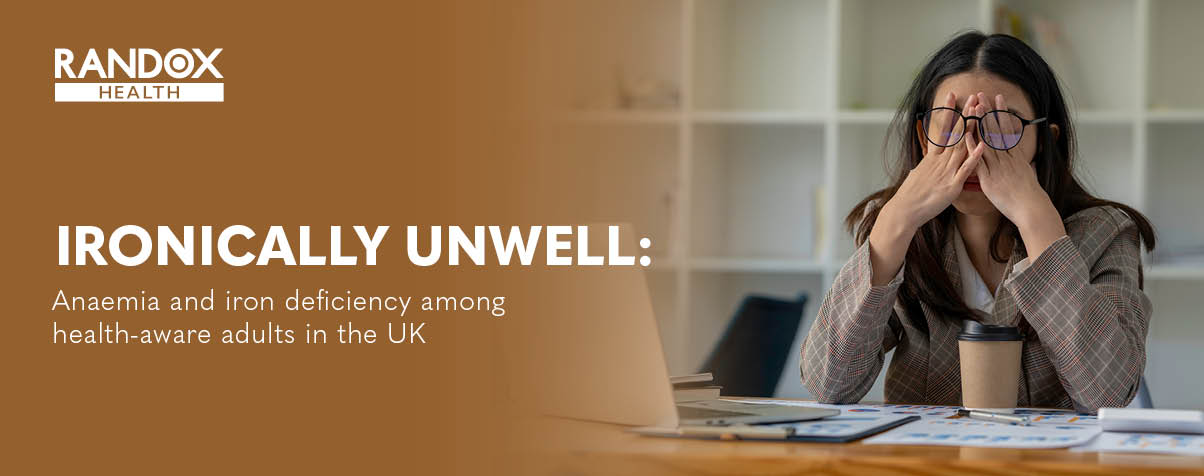13/10/2025
Could you be low in Iron?
If you’ve ever felt tired for no clear reason, struggled to focus, or just felt “off,” you might have blamed stress, sleep, or a busy schedule. But there’s another, sneakier culprit that could be at play: low iron levels.
A new study from Randox Health published in Frontiers in Nutrition has uncovered something surprising — iron deficiency and anaemia are far more common than we thought, even among people who seem healthy and take good care of themselves.
_____________________________________________________
The Study in a Nutshell
Researchers looked at over 33,000 blood samples from Randox Health clients. The goal was to see how common anaemia and iron deficiency really are.
And the results? Let’s just say they might make you want to book your next blood test
What They Found
- Anaemia Is Hiding in Plain Sight
Around 6% of people were found to have anaemia. Women, especially those aged 18 to 50, were hit the hardest. Nearly 1 in 10 women were anaemic.
- Iron Deficiency Is Even More Widespread
When the researchers dug deeper, they found that almost one in three women had low iron stores — what’s called absolute iron deficiency. Even some men showed signs of iron-related issues, especially “functional” iron deficiency, where your body has iron but can’t use it efficiently.
- Most People Have No Idea
Despite how common this is, there’s no routine screening for iron deficiency in the UK. Unless you’re pregnant or already unwell, you might never have your iron checked — even though it plays a huge role in your energy, focus, and overall health.
Read the full study here https://www.frontiersin.org/journals/nutrition/articles/10.3389/fnut.2025.1679989/full
_____________________________________________________
Why It Matters
Iron is a quiet powerhouse in your body. It helps red blood cells carry oxygen, supports your brain and immune system, and keeps fatigue at bay. When your levels drop, your body struggles — but the symptoms can be subtle.
That’s why many people live with low iron for months (or years) before realising something’s wrong. It’s not always dramatic — it’s more like a constant low battery warning that never goes away.
So, What Can You Do?
Here are a few simple ways to stay on top of your iron levels:
- Book a blood test at Randox Health to check in on your iron status.
- Eat iron-rich foods. Red meat, lentils, beans, spinach, and fortified cereals are all good sources of iron.
- Boost absorption. Pair iron-rich meals with vitamin C (think: spinach + lemon, or beans + peppers).
- Watch your coffee and tea intake. They’re great, but when consumed with meals, they can block iron absorption.
- Don’t self-diagnose supplements. Too much iron can be harmful — always talk to a doctor before taking any.
The Takeaway
This study is a wake-up call. Even people who seem “healthy” can be running low on iron without realising it. Especially for women, checking your iron status shouldn’t be an afterthought — it should be part of routine wellness.
So next time you’re feeling drained or foggy, don’t just shrug it off. Your body might be trying to tell you it needs a little more iron in its life.
_____________________________________________________
How the The Everyman | Everywoman Test can help
For a simple, all-in-one way to check your iron levels, the Randox Health Everyman | Everywoman test offers a comprehensive look at your health — including key markers for iron and anaemia such as haemoglobin, ferritin, and transferrin saturation.
This advanced blood test screens over 150 biomarkers linked to energy, hormones, nutrition, and overall wellbeing, helping you spot deficiencies early — even before symptoms appear. With a detailed report and expert consultation, you’ll get clear insights and tailored guidance to help you boost energy, improve focus, and support long-term health.
👉Purchase the Everyman test here: Full Body MOT Health Check | Everyman |Private Blood Test
👉Purchase the Everyman test here: Full Body MOT Health Check | Everywoman|Private Blood Test



